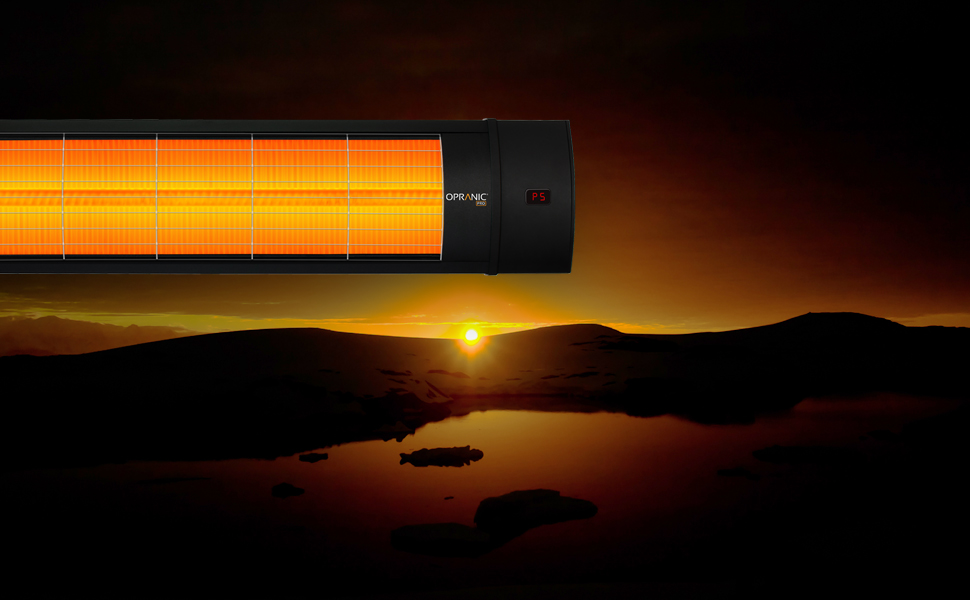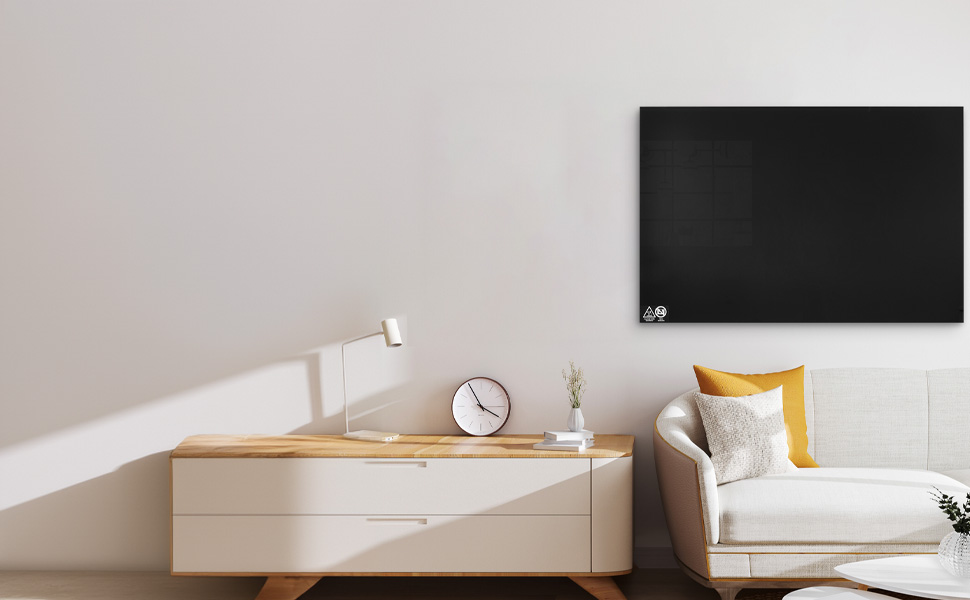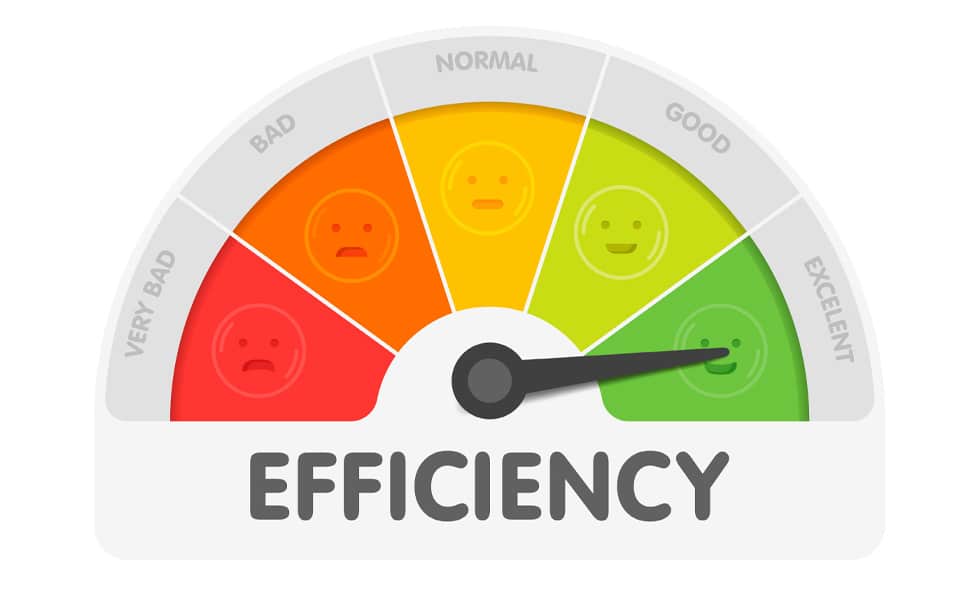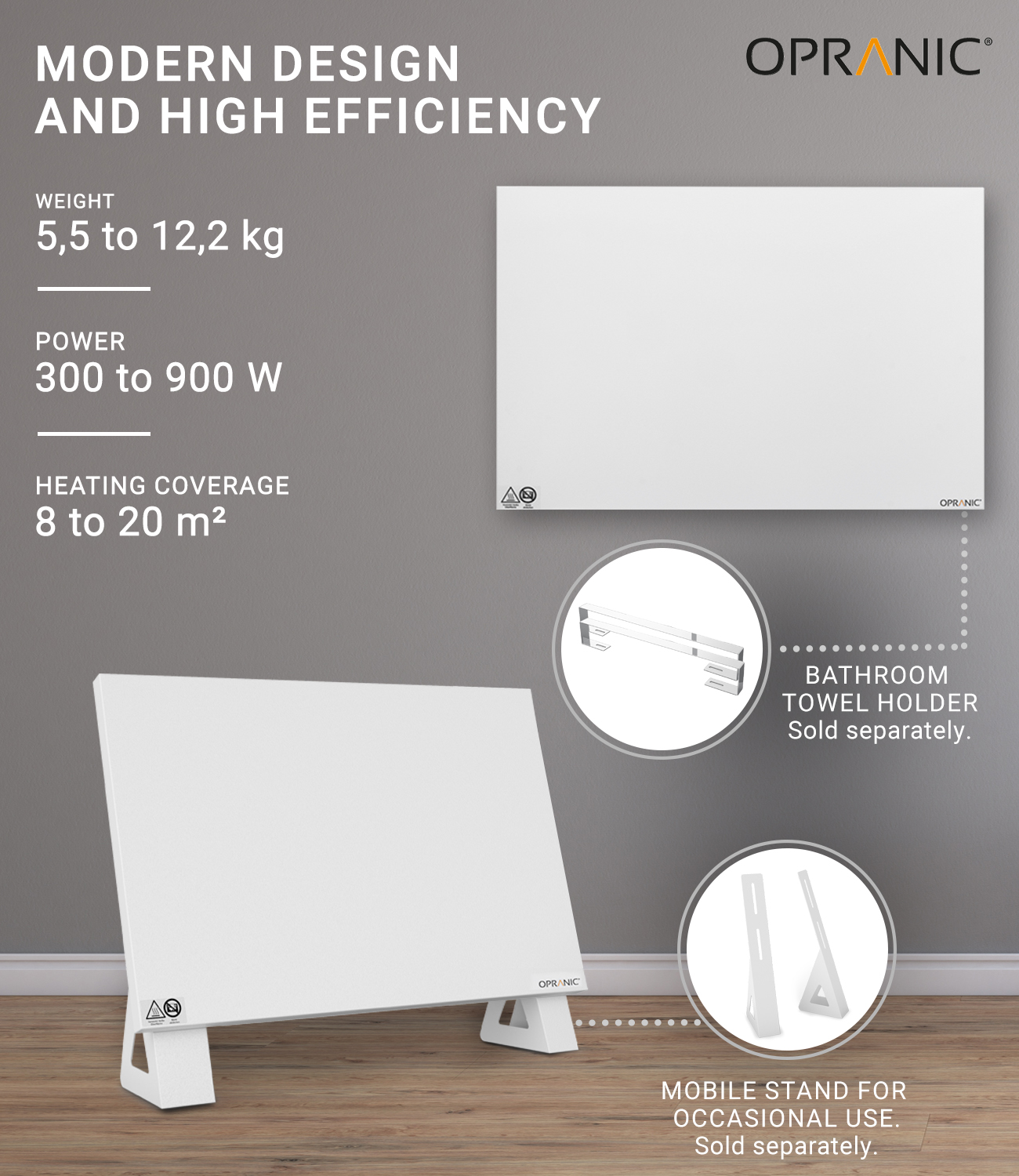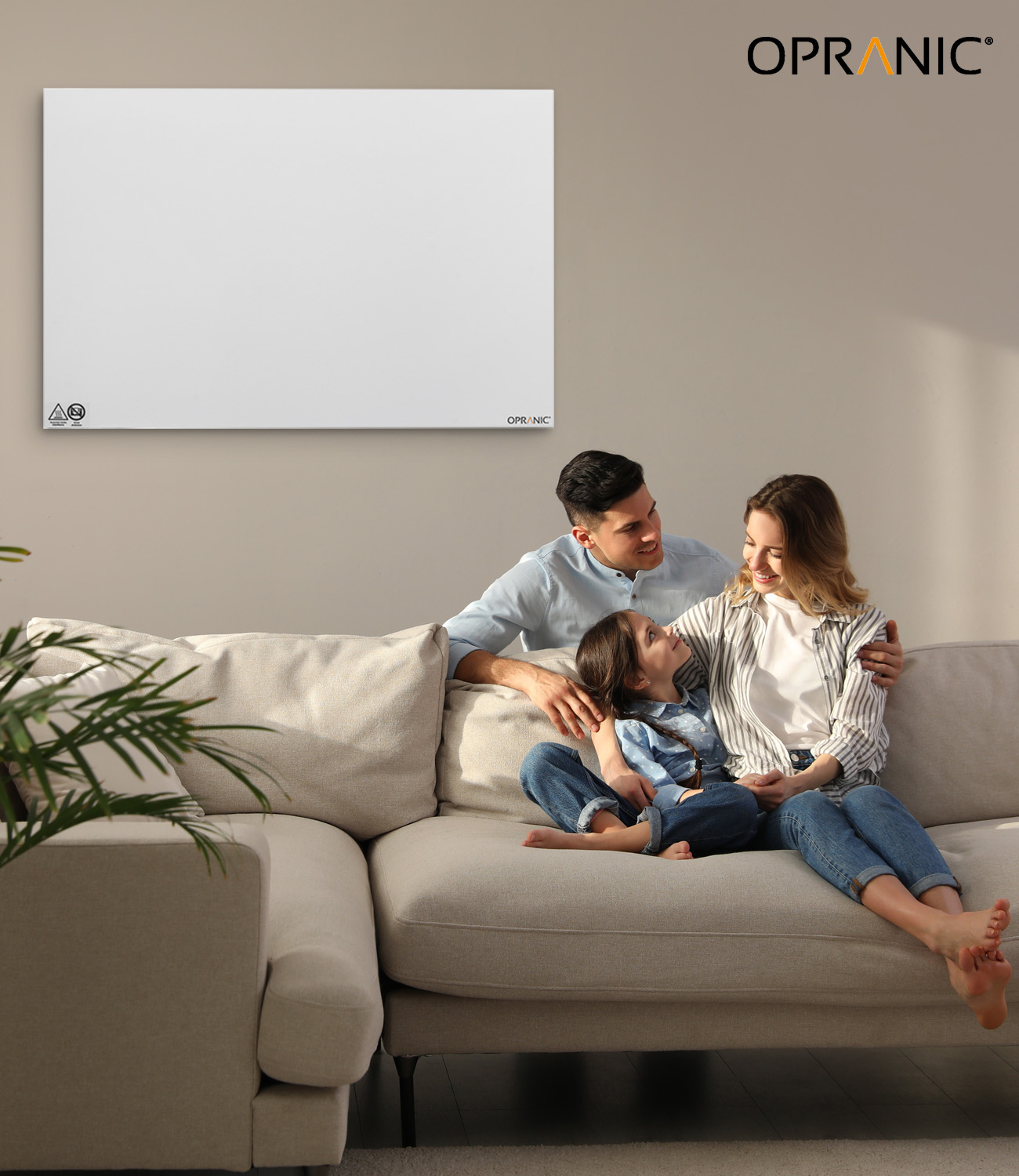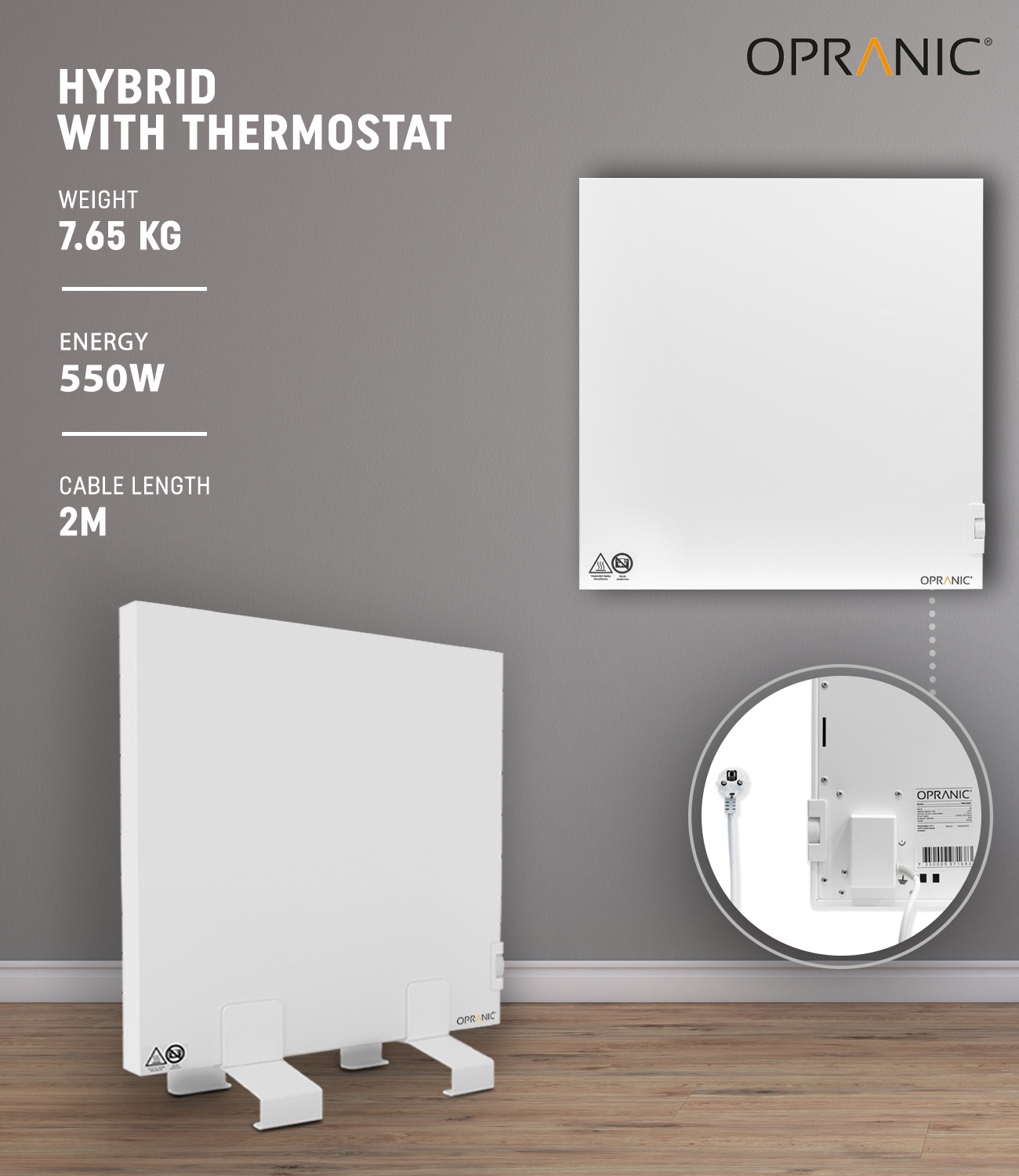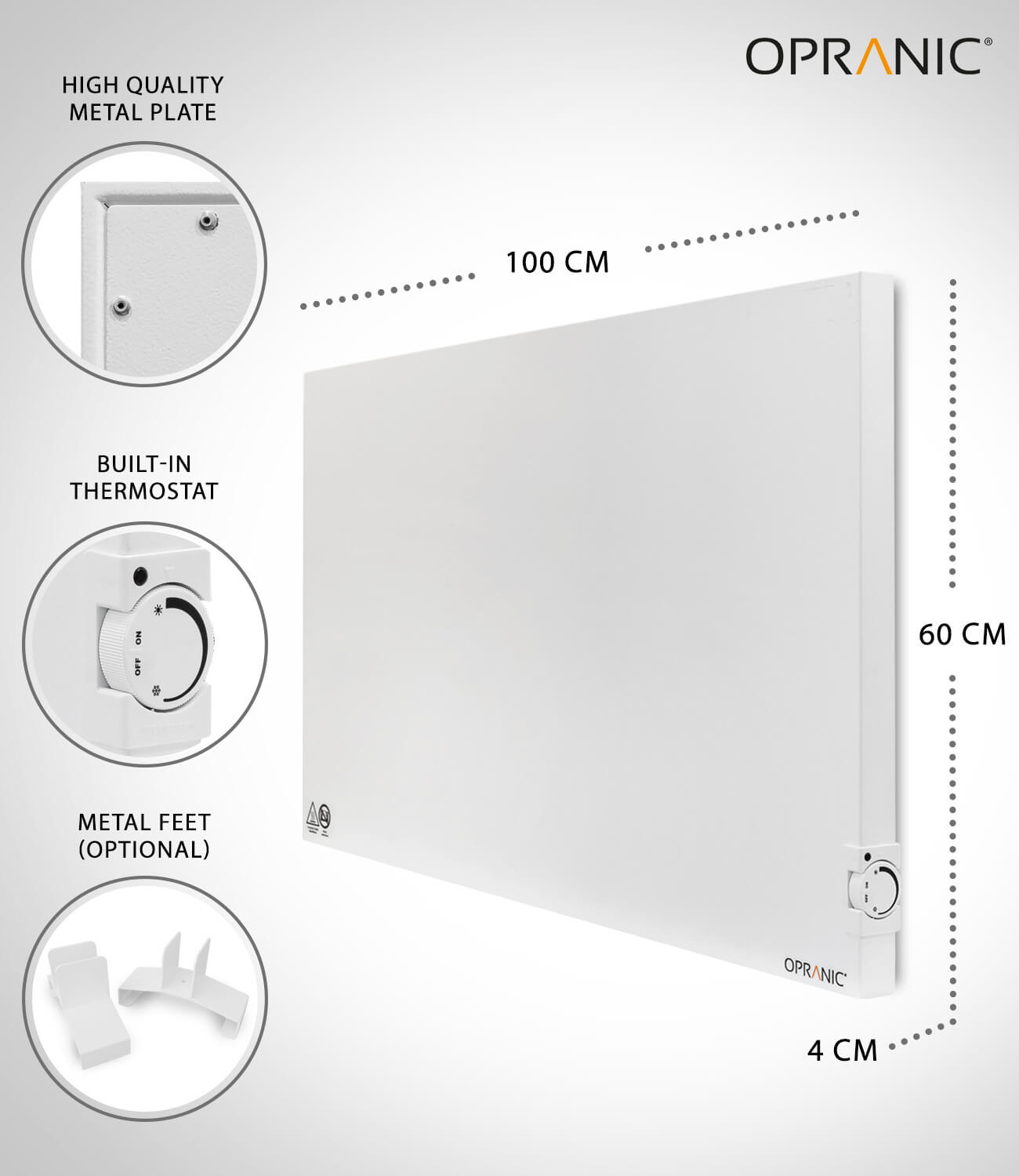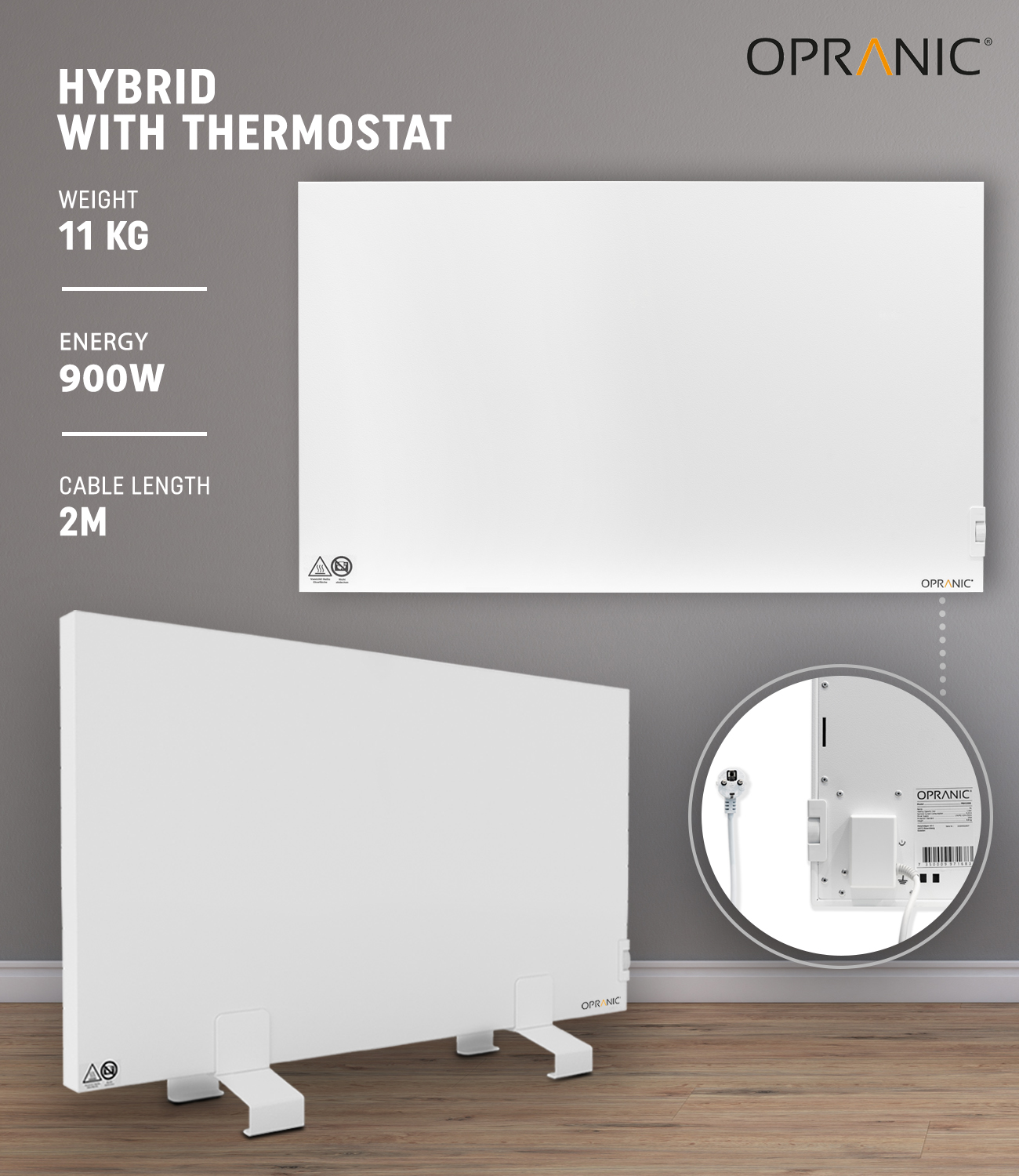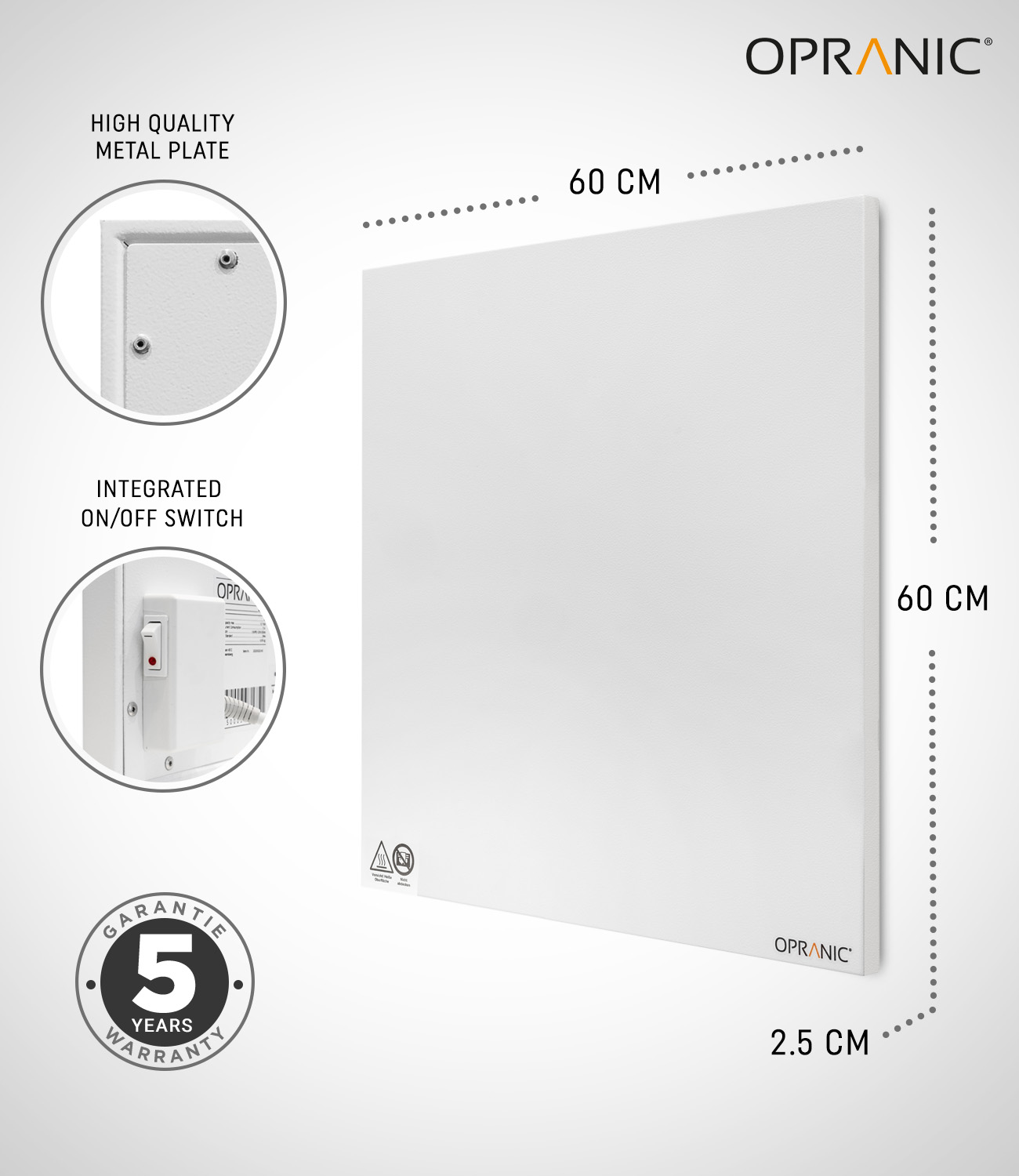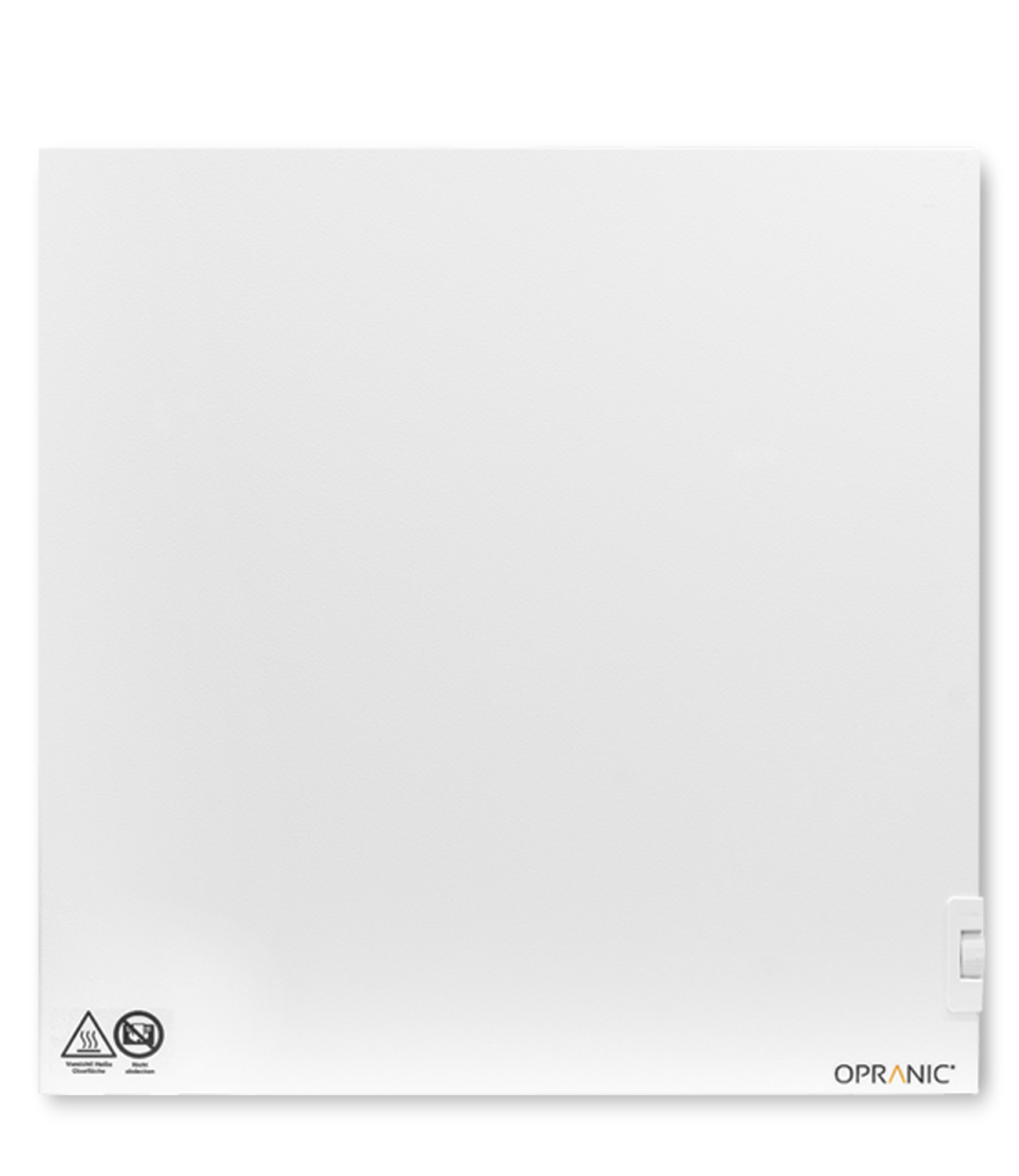Cost analysis of infrared heaters
Infrared heating cost analysis is crucial to understanding the cost-effectiveness of these heating systems. Infrared heaters have received more attention in recent years as they are an energy-efficient and environmentally friendly alternative to conventional heating systems. The cost analysis of infrared heaters includes an examination of the installation, ongoing operation and long-term savings. These heating systems use infrared radiation to generate heat and offer many advantages, such as even heat distribution and the ability to heat individual rooms in a targeted manner. Before deciding on an infrared heater, it is therefore important to consider all cost aspects.
Overview and introduction
In this article, we carry out a comprehensive cost analysis of infrared heating systems.
This will help you make an informed decision on which heating system to choose.
We look at the investment costs of installing an infrared heating system, the running costs compared to conventional heating systems and the potential savings over the lifetime of such a heating system.
Whether you are choosing a heating system in a new build or replacing your existing heating system, this analysis will provide you with important information.
Let’s dive in now and take a look at the different aspects of infrared heating cost analysis.
Introduction: Why a cost analysis is important
The financial picture of infrared heating in the modern home Cost analysis of infrared heating is crucial to understanding its cost-effectiveness.
Infrared heaters offer an efficient heating option, especially in new builds and conversions.
Their popularity is growing due to their energy efficiency and ability to heat rooms evenly.
Acquisition costs of infrared heaters
Price range and influencing factors The purchase costs for infrared heaters can vary depending on various factors.
The price range extends from affordable options to high-end models.
Factors such as size, performance, design, material quality and additional functions such as thermostats or smart home integration influence the cost.
Another important aspect is the insulation of the room and the building.
Insulation of the room and the building
The insulation is decisive for the required output of an infrared heater.
In poorly insulated rooms, a higher heat output must be selected in order to heat effectively.
This increases the purchase costs and energy consumption.
Good insulation, on the other hand, reduces energy requirements and saves costs in the long term.
Size and performance
Larger and more powerful infrared heaters are more expensive.
The choice of size and output depends on the area to be heated, the room height and the insulation quality.
Material and design
High-quality materials such as ceramic can increase the cost.
Design models are also often more expensive.
Control and additional functions
Digital control, programmable thermostats and smart home compatibility increase convenience, but also costs.
Energy efficiency
More efficient models are initially more expensive, but save energy costs in the long term.
Brand and manufacturer
Well-known brands often offer higher quality and better customer service, but are more expensive.
Compared to other heating systems, infrared heaters are often cheaper to buy as they are easier to install.
They are particularly suitable for rooms that require quick and targeted heat.
However, the operating costs can be higher, especially in poorly insulated buildings and when electricity prices are high.
In addition to the purchase costs, the running operating costs and individual requirements should also be taken into account.
Operating costs: power consumption and maintenance
Operating costs and maintenance are just as important as the purchase costs when using infrared heaters.
These costs are mainly made up of electricity consumption and expenses for maintenance and any repairs.
Electricity consumption depends on the output of the heater and the period of use.
Maintenance costs are generally low, but possible repair costs should be taken into account.
Average electricity consumption and costs
The power consumption of an infrared heater depends on its output and the intensity of use.
A typical infrared heater has an output of between 300 and 900 watts.
To calculate the average power consumption, the output of the heater (in kilowatts) is multiplied by the number of operating hours.
For example, a 500 watt heater consumes 2.5 kilowatt hours (kWh) of electricity for 5 hours of operation per day.
At an average electricity price of €0.30 per kWh, the daily cost would be €0.75, which equates to around €22.50 per month.
Maintenance and possible repair costs
One of the advantages of infrared heaters is that they are relatively low-maintenance compared to other heating systems.
They have no moving parts such as fans or pumps that require frequent maintenance or replacement.
Maintenance is usually limited to regular cleaning and checking the electrical connections.
However, repair costs may be incurred if components such as the heating element or thermostat fail.
The cost of such repairs varies depending on the model and manufacturer.
Energy efficiency and long-term savings
Energy efficiency and long-term savings are crucial when evaluating heating systems.
In this respect, infrared heaters offer a number of advantages that set them apart from conventional heating systems.
Infrared heaters vs. conventional heaters
Infrared heaters work with a different heat distribution method than conventional heating systems such as gas, oil or central heating systems.
While conventional heaters heat the air in a room, infrared heaters radiate heat directly, which is absorbed by objects, walls and people.
This results in a more efficient feeling of warmth, as the heat is transferred directly to the surroundings instead of heating the air first.
This direct heat transfer can lead to a more efficient use of energy as less heat is lost, especially in well-insulated rooms.
Energy consumption and the resulting costs can be lower with infrared heating than with conventional heating systems under optimal conditions.
Reduction of energy consumption through intelligent control
Programmable thermostats make it possible to set heating schedules based on the time of day and the use of the room.
For example, the heating can be automatically reduced when no one is at home.
Zone control allows different areas of a home to be heated individually, preventing unnecessary energy consumption in rooms that are rarely used.
Integration into smart home systems enables even more precise control and adaptation to personal preferences, weather conditions and other external factors.
Such intelligent control systems can significantly reduce energy consumption, which is not only environmentally friendly, but can also lead to significant cost savings over the lifetime of the heating system.
The cost analysis of infrared heating systems confirms that these systems can operate more energy efficiently through intelligent control and optimization of usage patterns.
Subsidies and government grants
The installation of energy-efficient heating systems, such as infrared heating, can be supported in Germany and Austria through various funding programs and government grants.
These programs aim to facilitate the transition to more environmentally friendly heating solutions and improve energy efficiency in buildings.
In Germany, there are several subsidy programs that could be considered for the installation of infrared heating systems: KfW funding programs (Kreditanstalt für Wiederaufbau): The KfW offers various programs that include grants or low-interest loans for the renovation or construction of energy-efficient residential buildings.
These programs include the “Energy-efficient refurbishment” program.
BAFA funding (Federal Office of Economics and Export Control): BAFA offers subsidies for measures to use renewable energies.
Although infrared heaters do not fall directly under renewable energies, they may be eligible for funding in combination with a photovoltaic system as part of an overall concept.
There are also funding programs in Austria that may be relevant for the installation of infrared heaters: Domestic Environmental Funding (UFI): This program supports investments in environmentally friendly technologies.
Subsidies can be applied for for the renovation of buildings, whereby the installation of energy-efficient heating systems, including infrared heaters, can also be subsidized.
State-specific subsidies: Various federal states in Austria offer their own subsidy programs.
These programs vary from state to state and can include grants or low-interest loans.
When applying for funding, it is important to check the respective guidelines and requirements.
It is often necessary to apply before starting the measures.
Information on this can be found on the websites of the relevant state authorities or environmental funding agencies.
Summary
Summary As an energy-efficient alternative to traditional heating systems, infrared heaters offer even and targeted heat distribution.
The cost analysis of infrared heaters shows that the purchase costs vary between 100 and 2,500 euros, influenced by factors such as size, output and additional functions.
The insulation of the room plays a key role, as poor insulation increases energy consumption and therefore costs.
The operating costs are mainly made up of electricity consumption and maintenance, although infrared heaters are generally low-maintenance.
Intelligent control systems such as programmable thermostats and smart home integration can further reduce energy consumption and costs.
The cost analysis of infrared heating systems shows that in Germany and Austria, government subsidies support the installation of energy-efficient heating systems, which can reduce the initial investment.
Overall, infrared heaters offer a cost-effective heating solution with potential for long-term savings.
Can infrared heaters really reduce my heating costs?
The question of whether infrared heaters can actually reduce heating costs is of great interest to many who are looking for a more efficient and cost-saving heating solution.
The answer depends on various factors, including the specific characteristics of the infrared heater, the nature of the room to be heated and the way in which the heating system is used. Properties of infrared heaters: Infrared heaters convert electrical energy directly into heat, transferring the heat to objects and people in the room via infrared rays.
This direct method of heat transfer can be more efficient than conventional heating systems, which have to heat the air first.
This difference can lead to a reduction in energy consumption. Room condition and insulation: The efficiency of infrared heaters depends heavily on the insulation and the size of the room to be heated.
In well-insulated rooms, infrared heating can be very efficient as the heat is retained in the room for longer.
In poorly insulated rooms, on the other hand, the energy consumption can be higher, which reduces the cost savings. Comparison with other heating systems: The comparison of heating costs between infrared heaters and other heating systems such as gas or oil heating depends on various factors, including current energy prices.
Infrared heaters can be more cost-efficient in certain situations, such as for the targeted heating of individual rooms or in combination with a photovoltaic system. Use and control: The way in which infrared heating is used and controlled plays a decisive role in cost savings.
Energy consumption can be optimized by using programmable thermostats and intelligent control systems.
For example, zone-based control allows heating only where it is needed, which can lead to a reduction in overall energy consumption.
In summary, under the right conditions and when used properly, infrared heating can reduce heating costs.
However, the actual cost saving depends on various factors, including the insulation of the building, the type of use and current energy prices.
It is advisable to carry out an individual calculation based on the specific circumstances of your own house or apartment in order to obtain an accurate estimate of the potential savings.
Are there any hidden costs that I should be aware of?
The question of hidden costs associated with infrared heating is extremely important in order to make an informed decision.
While infrared heaters are known for their energy efficiency and ease of installation, there are some potential costs that are not immediately obvious but should be considered. Installation and set-up: Even though infrared heaters are generally easier and cheaper to install compared to other heating systems, there may still be installation costs depending on the situation.
This is particularly true if additional electrical work is required or if you are planning to integrate it into an existing smart home system. Maintenance and repairs: Although infrared heaters are considered low-maintenance, repairs or the replacement of parts may become necessary over time.
Costs for spare parts or skilled labor should therefore be taken into consideration. Service life of the heater: The service life of an infrared heater influences the long-term costs.
It is important to consider how long the heater is likely to last and when it may need to be replaced. Efficiency in different rooms: The efficiency of infrared heaters can vary depending on the room.
They may be less efficient in large, poorly insulated or draughty rooms, resulting in higher running costs. Insurance and safety: Check if there are any special requirements or additional costs for insurance, especially if the infrared heater is being installed in an apartment or rental property.
By considering these potential hidden costs in advance, you can get a more realistic estimate of the total cost of running an infrared heater.
It is advisable to carry out a detailed calculation that takes all these factors into account in order to make an informed decision.

